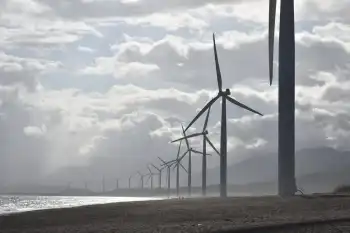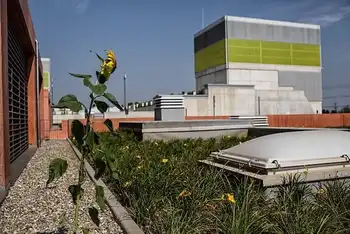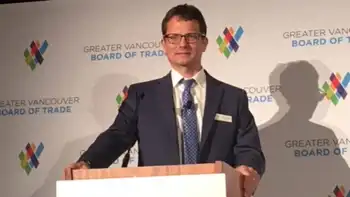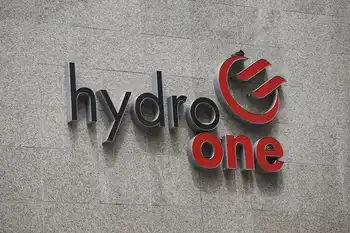Land not being used for solar power
PRIMM, NEVADA - Not a light bulb's worth of solar electricity has been produced on the millions of acres of public desert set aside for it. Not one project to build glimmering solar farms has even broken ground.
Instead, five years after federal land managers opened up stretches of the Southwest to developers, vast tracts still sit idle.
An Associated Press examination of U.S. Bureau of Land Management records and interviews with agency officials shows that the BLM operated a first-come, first-served leasing system that quickly overwhelmed its small staff and enabled companies, regardless of solar industry experience, to squat on land without any real plans to develop it.
At a time when the nation drills ever deeper for oil off its shores even as it tries to diversify its energy supply, the federal government has, so far, failed to use the land it already has — some of the world's best for solar — to produce renewable electricity.
Nowhere is this more evident than in Nevada, where a Goldman Sachs & Co. subsidiary with no solar background has claims with the BLM on nearly half the land for which applications have been filed, but no firm plan for any of the sites.
The Obama administration says it is expediting the most promising projects, with some approvals expected as soon as September. And yet, it will be years before the companies begin sending electricity to the Southwest's sprawling, energy-hungry cities.
"Clearly we spent a lot of time and effort on oil and gas, but those priorities have changed," Ray Brady, BLM's head of energy policy in Washington, told the AP.
Congress in 2005 gave the Interior Department a deadline: approve 10,000 megawatts, or about five million homes' worth during peak hours, of renewable energy on public lands by 2015. Reaching that goal was left to the BLM, which oversees federal land and knows oil, gas and mining leases but is new to solar.
The Bush administration, however, kept BLM's focus on oil. BLM's database of solar applications shows many languished for years while the agency approved more than 73,000 oil and gas leases in the last five years. BLM has yet to give final approval to one solar lease.
BLM's solar leasing system ended up allowing developers to lay claim to prime sites — many located in the deserts that span California, Nevada and Arizona. All developers had to do was fill out an application, pay a fee and file development plans.
But many were so vague that it was difficult for BLM to separate the serious projects from the speculative ones.
"People were making solar applications on federal lands not knowing what kind of technology to propose and... how to develop the land," Brady said.
In the Southern California desert near Palm Springs, for example, San Diego-based LightSource Renewables filed an application in August 2008 for 2,500 acres, BLM records show. The small, two-person development firm knew enough to recognize the land's worth — it was close to transmission lines — but had no previous experience with such projects.
Co-founder Paul Whitworth said it is now focusing on getting private land, and is not pursuing plans for its BLM site. The agency, however, still considers the application active, meaning other interested firms cannot access it.
"We don't know what technology will win or lose, and certain sites cater to certain technologies, but a good site is a good site," Whitworth said when asked why they filed their application. The firm has never filed a development plan, records show.
While dozens of smaller firms like Lightsource joined in the rush, BLM records show two Goldman subsidiaries filed 52 of the 354 applications throughout the region, more than any other company.
"Those 52 applications are an example of the problem of clogging up the system," said V. John White, executive director the Sacramento, Calif.-based Center for Energy Efficiency and Renewable Technologies, a clean-energy advocacy group, in an e-mail. The system has limited access by experienced solar developers to the best sites.
"Some of these lease applications tied up more land than would be needed for a real project," he said.
For example, records show Goldman-owned Cogentrix Solar Services, LLC, the subsidiary with no previous solar experience, has a pending application for 13,440 acres in Nevada for a 1,400-megawatt solar plant. Another claim on land nearby asks for 22,400 acres for the exact, same-sized plant.
BLM records show other companies proposing the same type of solar plants were asking for 6,000-7,000 acres.
Over the years, BLM rejected applications or companies withdrew them, bringing the total active applications to 123.
Some of Goldman's California applications were withdrawn after U.S. Sen. Dianne Feinstein proposed last year that part of the Mojave Desert where some of the projects were proposed be declared a national monument. Now Goldman holds 10 of the 123, including eight that cover nearly half the land proposed for solar in Nevada.
An AP review of BLM's applications database found Cogentrix has staked more development claims in the Southwestern deserts than any other company. In Nevada alone, Cogentrix has applied for exclusive development rights on nearly as much federal land as all other companies combined. Its active lease applications cover about 120,000 acres — the equivalent of more than eight Manhattans.
"Goldman Sachs was one of the first applicants to dot the map with potential projects, and since then they haven't moved on any of them," said Gregory Helseth, the BLM's new renewable energy project manager in southern Nevada. "You can't hold the land forever. You can't be a prospector and hope somebody down the road wants to buy."
A Goldman representative defended the firm's solar investments, saying the Wall Street titan has since gained experience through its 2009 purchase of an aged solar facility in San Bernardino, Calif., that it was moving forward in good faith and was not blocking anyone. The company also announced this month it had reached a deal to build a small, 250-acre project in Colorado on private land.
"While we continue to pursue development of projects utilizing public lands in the Southwest, we have not held land reservations if they are determined not to be viable for future solar development," company spokesman Ed Canaday said in an e-mail.
The Obama Administration has identified 14 promising "fast-track" projects targeted for approval by year's end so they can qualify for stimulus funding. None of Goldman's claims are among them.
When completed, these facilities could generate 6,000 megawatts, enough electricity for several million homes during peak hours. There is a ready market for big plants, with California's strict climate change laws creating a huge demand among utilities for solar power.
Companies that hold BLM solar development applications are prohibited from selling them, but the companies themselves can be sold along with the potentially lucrative applications.
Tempe, Ariz.-based First Solar, an industry leader and a maker of solar panels, bought two smaller companies, including the companies' land rights and power agreements with utility companies. First Solar paid about $400 million for OptiSolar and $285 million for NextLight. Analysts say the sale value of both companies likely was increased because they held BLM solar development applications.
First Solar spokesman Alan Bernheimer said the acquisitions were valued on the companies' signed agreements with utilities not on their BLM land positions.
In September, at least two of the "fast-track" projects — by Oakland, Calif.-based Brightsource Energy and by First Solar-owned Nextlight — are expected to get the first solar permits issued by BLM. Bringing plants online however will likely take years.
These fast-tracked sites are located on either side of the dormant Goldman lease near Roach Dry Lake, located about 35 miles south of Las Vegas, and will utilize the same Southern California Edison transmission lines that pass over Goldman's site.
Goldman spokesman Canaday said the company is still trying to work out a deal with a utility.
And BLM's Helseth said he still is seeking final plans from Goldman and Cogentrix. He said the agency's main problem was that there were too few employees available to work on the applications.
Under Obama administration, more BLM staff like Helseth have been hired to help weed out dormant applications so developers better suited for the job can be found. Officials say the administration is trying to avoid future land rushes by identifying the best solar locations with the fewest environmental impacts, rather having a free-for-all.
Critics say BLM should have done this in the first place and help avoid years of delay.
"BLM let people file applications willy nilly wherever they wanted," said Johanna Wald, a land-use attorney with the Natural Resources Defense Council.
Related News

More pylons needed to ensure 'lights stay on' in Scotland, says renewables body
GLASGOW - Renewable energy in Scotland is being held back by outdated grid infrastructure, industry leaders said, as they warned new pylons and power lines are needed to "ensure our lights stay on".
Scottish Renewables said new infrastructure is required to transmit the electricity generated by green power sources and help develop "a clean energy future".
A new report from the organisation - which represents companies working across the renewables sector - makes the case for electricity infrastructure to be updated.
But it comes as electricity firms looking to build new lines or pylons face protests, with groups such as the Strathpeffer and…




